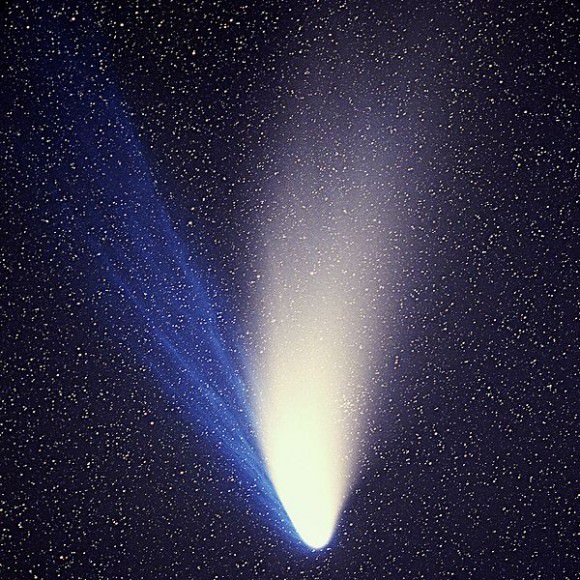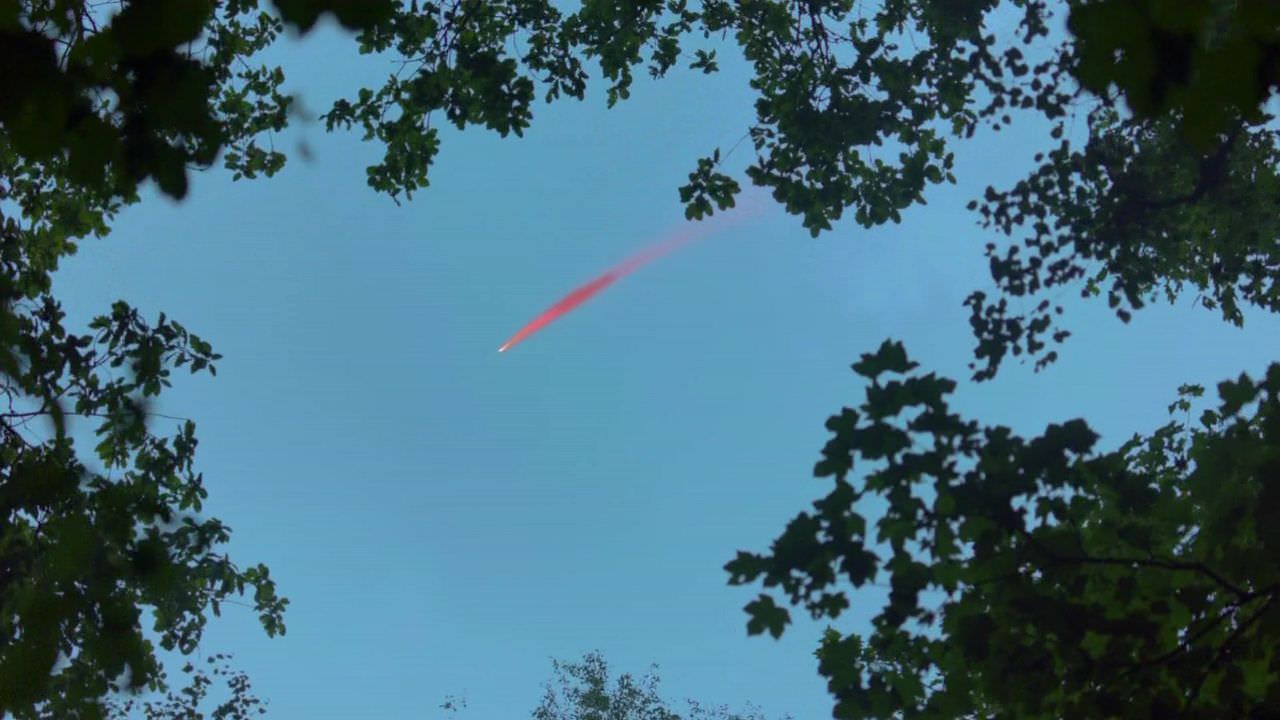A blood-red comet appears in the sky. People quake in its wake.
This phenomenon, which happens in the second season of the medieval fantasy Game of Thrones, had us all wondering — can you ever actually see a red comet?
We talked to Matthew Knight, an astronomer at the Lowell Observatory in Arizona who observes comets. He gave us some answers just in time for the third season of Game of Thrones, which begins March 31.
At first blush, he said, the comet’s red color wouldn’t be possible because the strongest emissions from comets are in the blue and green regions, mostly from neutral gases such as hydroxide and cyanide.
There is a type of emission that is close to red, called “forbidden oxygen”, which occurs when atoms make a rare energy transition between states of “excitement”. But it’s very faint and short-lived, Knight wrote.
The visible light from a comet comes from a combination of reflected solar continuum (sunlight reflecting off of dust grains) and cometary emission (neutral and/or ionized molecules of gas that emit photons at a particular wavelength). The sunlight reflecting off of dust grains basically looks like sunlight and since the Sun appears yellow/white, this component cannot look red.
A small caveat is that due to the physical properties of dust grains, comet dust often actually does “redden” sunlight slightly when measured with sensitive equipment. However, this reddening is at a very low level and is not enough to cause the reflected sunlight to appear a deep red like in Game of Thrones. The strongest comet emissions in the region where human eyes can see are in the blue and green regions.

So what ingredients does a comet need to look like the one in Game of Thrones? According to Knight, it would have to meet these criteria:
- Be visible in daylight, which really only happens about once a century;
- Be close to the sun (he supposes this one is, given how straight the tail is);
- Have a “strange composition” that is different from anything we know in the solar system. The composition could be that forbidden oxygen he talked about, coming from a comet whose ices are carbon monoxide and carbon dioxide. But that would be hard, because those types of ices would not survive long when exposed to sunlight.
If we really want to think in a science fiction vein, Knight suggests that maybe the comet could be made up unpredictably:
Alternatively it could be something else entirely unknown in cometary chemistry or dust, with really weird properties causing a much stronger reddening than is normally seen. In any event, the composition would be so anomalous that this comet would almost certainly have originated in another solar system. That would make comet scientists very interested in studying it!
But don’t despair yet. Comet ISON might be bright enough for daylight viewing when it swings by Earth late in 2013. Comets are unpredictable beasts, but we’re pretty sure of one thing: no matter how bright it is, it won’t look red.


Well just precipitate all over my Westeros parade, why don’t you! 😉 Awesome piece, I love that you researched this to answer questions about the difference between what we see in fantasy stories, and how comets really work. With two comets visible in our skies this year, I think interest will reach an all-time high! 🙂 Can’t wait for ISON!
Well. Red comets means dragons so that’s why we haven’t seen em, duh!
“The sunlight reflecting off of dust grains basically looks like sunlight
and since the Sun appears yellow/white, this component cannot look red.”
Well, when you walk around on a sunny day, everything you see is by reflected sunlight. Yet we can see red objects.
Is it beyond imagination that comet dust could contain cadmium compounds like those found in artists pigments?
Or even tholin. Sedna is rich in tholin.
“Have a “strange composition” that is different from anything we know in the solar system.”
Winters that last decades. Strange as well as familiar flora and fauna. Legends that there were once two moons. “Game of Thrones” is a fantasy, an alternate universe. It doesn’t have to be set in our solar system.
One thing about the show that bugs me: They show the comet in the day sky and a little later it’s shining in the night sky. Reminds me of Apocalypto where they show a full moon the night after a total solar eclipse.
Could be artificial. Dragons are a crafty bunch and what mere mortal can tell what they’re up to.
Giotto painted Halley’s Comet as red, and previous apparitions of it were described as very red. Comet West was red too, at least as seen from Scotland.
What if this comet is an rock made of ice and strontium? The ice would make a big tail and this element emits red light when ionized.